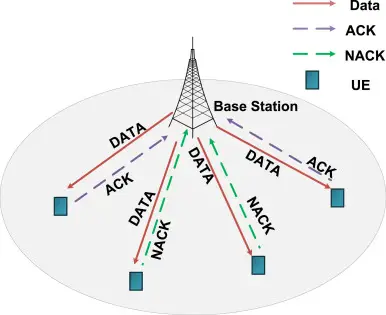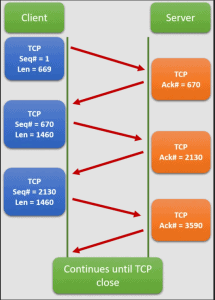Many freelancers work in the data network industry. In the telecommunications and data networking industries, acknowledgment is a signal passed between communicating processes or computers to signify acknowledgment as part of a communications protocol.
What is NAK?
NAK, or negative acknowledgment, is a protocol message the sender receives when a message is not sent, a corrupt message is sent, or something has gone wrong. This message might also show that treceiver’sr’s station is not ready for transmission. Whenever this type of message is displayed, it’s mandatory to send the message again.

NAK, or negative acknowledgment, is a protocol message sent between two devices in a computer network. This type of message occurs when something has gone wrong during transmission, such as when a message was not sent correctly or has become corrupted. It may also appear that the receiving station is not yet prepared to accept the message. In these cases, the sender must attempt to resend the original message to ensure it is reliably received.
Protocols must be established for two machines to communicate over a network so that each device can effectively understand one another. Negative acknowledgments are part of this process and inform the sending device when something goes astray during transit. They’re an essential mechanism for maintaining stable communications between machines on a network.
NAK messages come in many forms, but all generally convey the same meaning—the current communication between two devices is broken and needs to be restored before further data can be exchanged. To accomplish this restoration, the sending machine must resend its original request until it receives a positive acknowledgment (ACK). Only when both devices have acknowledged the other’s messages can they continue their conversations without interruption.

In practice, we can easily explain ACK NAK protocol differences:
ACK vs. NAK
ACK (acknowledge) and NAK (negative acknowledge) are two response protocols used in communication systems to indicate whether a message has been successfully received.
ACK NAK protocol difference is that the NAK protocol (negative acknowledgment) is a protocol message that is sent when something’s gone wrong, the r exam, “l “We can not hear” y”..” on’tn’t under” a.”, hile ACK or acknowledgment protocol message sign” f” OK, understand, “e.”
Here are the main differences between them:
ACK:
- ACK protocol indicates that the received message is correct and has been successfully received.
- It is a positive response that confirms the message’s successful transmission.
- The receiver sends ACK after receiving the data packet from the sender.
- It can be used for both unicast and multicast communication.
- In case of packet loss or corruption, the sender assumes that the packet has not been received and retransmits the packet.
NAK:
- NAK protocol indicates that the received message is incorrect or has not been successfully received.
- A negative response informs the sender that the message was not received successfully.
- The receiver sends NAK after receiving the data packet from the sender.
- It can be used for both unicast and multicast communication.
- In case of packet loss or corruption, the receiver sends a NAK message to the sender, indicating that the packet has not been received successfully and needs to be retransmitted.
NAK Example – Negative Acknowledgment Example
The File Transfer Protocol (FTP) communication process shows an example of the NAK protocol. In FTP, after a file is transmitted from the sender to the receiver, the receiver sends an acknowledgment message to the sender indicating that the file has been received successfully. However, if the receiver detects an error in the file, such as a corrupted packet or missing data, it sends a NAK message instead of an acknowledgment message.
For instance, if a file transfer is being performed over a network and one of the data packets is lost or corrupted, the receiver cannot reconstruct the complete file. In such a case, the receiver sends a NAK message back to the sender, indicating that the packet was not received or was corrupted. The sender then retransmits the lost package or data segment until the receiver acknowledges that the file has been successfully received.
This process of sending NAK messages helps ensure the reliability of the file transfer process by detecting and correcting errors in the data transmission. Without the NAK protocol, the sender would assume that the file has been successfully received, leading to data corruption or loss.
See below an example of TCP ACK NAK protocol:

One example of Negative Acknowledgment is the Internet’s Transmission Control Protocol (TCP). When computers communicate via TCP and receive packets, they are acknowledged by sending a package with an acknowledgment bit set.
Conclusion
Due to its critical role in establishing reliable communication between two devices on a network, system administrators and developers should not ignore or overlook NAK messages. Without proper understanding and management of NAK messages, networks may become overwhelmed with data as multiple requests remain unanswered due to retransmissions caused by improperly managed NAKs. As such, developers must take steps towards properly working these messages to avoid inefficient use of bandwidth and resources on a given computer network.
- Facebook Ads to Get Followers! - December 27, 2024
- ClickUp vs. Slack - December 20, 2024
- Mastering E-Commerce Analytics: A Blueprint for Success






